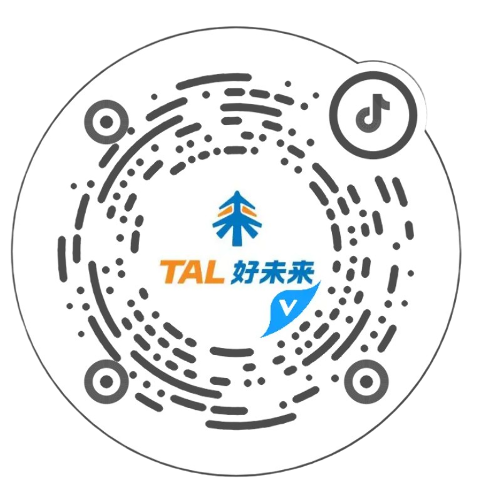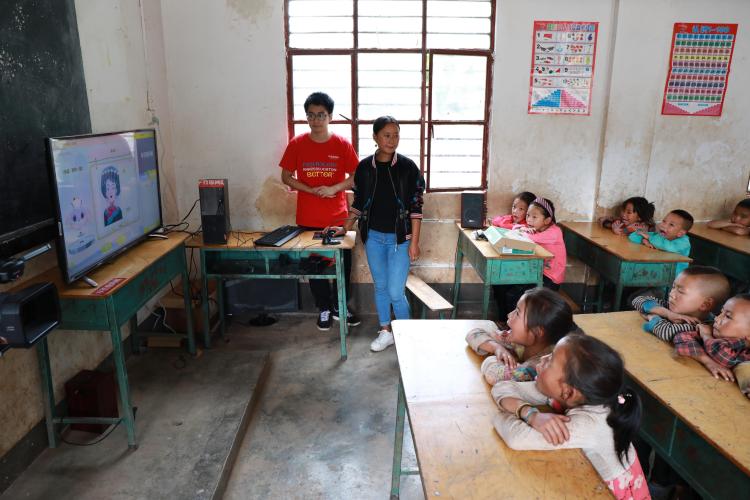




"Internet + education" welcomes another round of policy support. It is reported that in order to provide more fair and quality education, relevant departments will focus on promoting the development of "Internet + education" this year, by using Internet platforms and information technology to promote the continuous and deep integration of the Internet and the education industry, and to promote the sharing of high-quality educational resources. At the same time, demonstration work for the entry of 1-gigabit broadband to households in cities will be carried out to improve the level of distance education construction. Currently, the construction of educational networks in many areas is being accelerated.
Under the influence of policies and markets, the "Internet + education" industry is developing rapidly, with the scale of "online education" continuing to expand, and "AI + education" has become a new industry hot topic. According to industry estimates, in 2020, the number of online education users in China will reach 296 million, and the market size will reach 433 billion yuan, while the popularization of personalized education brought by artificial intelligence technology will accelerate the expansion of the online education market.

The rapid development of online education promotes education equity. The picture shows the classroom application scene of the poverty alleviation project "AI Teacher Smart Education" developed by Xueersi Online School. (Photo)
Popularization of information technology promotes education equity
A screen can connect classrooms of prestigious schools across the country with those in poor mountainous areas, and courses from famous teachers can be played "a la carte"... The deep integration of information technology and education enables more rural schools to enjoy high-quality educational resources. Internet-based "online education" effectively makes up for the shortcomings of current classroom education. According to iMedia Research, 70.5% of online education users believe that online education promotes education equity.
This is not an isolated example. In Songxian County, Henan Province, New Oriental Education & Technology Group (NetEase) built a smart classroom teaching resources platform, and through an academic assessment management system, smart classroom teaching system, and dual-teacher classroom teaching system, it served to provide a comprehensive solution for smart education including "education, learning, testing, evaluation, and management" for Songxian County. Currently, the information coverage rate of major course classrooms at Songxian Experimental School has reached 100%, and over 90% of teachers have realized the regular application of smart classrooms.
In Shirenzhen Township Primary School, Shangrao County, Jiangxi Province, relying on the "Tencent Smart Campus" platform, teachers upload videos, pictures, voice recordings, and assignments related to the growth of left-behind students every day, and promptly communicate with parents through the platform, which has resulted in a rapid improvement in the academic performance of left-behind students.
Providing good education to children in impoverished areas is one means of ensuring a fair starting point for education. Zhang Sheng, director of the China National Quality Monitoring Collaborative Innovation Center for Basic Education at Beijing Normal University, said that in the field of basic education, by means of distance live broadcasts and synchronous classrooms, help is offered to weak rural schools to "expand the number of classes, improve the quality of classes, and offer good classes," which has helped to alleviate difficulties such as insufficient teaching staff in poor areas.
Huang Yan, CTO of TAL Education Group and president of the Educational Open Platform, said that with the accelerated application of Internet, big data, and artificial intelligence technologies, the long-standing problem of uneven resource allocation in the education industry is expected to be further improved.
It is understood that TAL Education Group has already initiated smart education cooperation with the governments of Zhenjiang, Jiangsu, Xiongan New Area, Henan Songxian, Yunnan Wenshan, and Xingyi, Guizhou, to promote the construction of regional education informationization and drive the modernization of education through educational informationization.
Many educational institutions are focusing on "AI + education"
With the aid of AI technologies such as facial recognition and speech recognition, teachers can identify each student's classroom behaviors such as raising their hand and answering questions, in order to keep up with classroom dynamics at all times and provide personalized attention and feedback to students, creating a highly interactive classroom experience.
This is a scene in Xueersi Class under TAL Education Group, and it is an example of the personalized upgrade brought to traditional education by TAL Education Group through the use of artificial intelligence technology. As "Internet + education" enters the era of artificial intelligence, the deep integration of artificial intelligence technology with education has brought substantial development to "AI + education," and many parents have given feedback that the application of artificial intelligence and big data can analyze knowledge weaknesses, accurately identify problems, and help children find suitable learning methods.
Moreover, the application of intelligent homework correction, facial recognition, personalized recommendations, and AI teachers, among other technologies, are increasingly being used in diverse scenes of online education, continuously enhancing the user experience.
The application of artificial intelligence in the field of education has already received high attention from the country. The State Council previously issued the "New Generation of Artificial Intelligence Development Plan," which clearly stated that intelligent technology should be used to promote the reform of talent training models and teaching methods, and to construct a new educational system that includes intelligent learning and interactive learning.
The technological innovation in big data, AI, and other fields is not only promoting personalized teaching, but also exponentially expanding educational productivity. According to the "2018 China Online Education Industry White Paper" released by iMedia Research, the outstanding advantages of online education lie in its flexibility, richness of resources, and its ability to combine AI, VR, and other technologies to meet the diverse and personalized needs of users. It is predicted that by 2020, the number of online education users in China will reach 296 million, and the market size will reach 433 billion yuan.
It is worth noting that "AI + education" has become a new track that many educational institutions are actively developing. Baidu Education, NetEase Education, and others have successively launched "AI + education" products. New Oriental, TAL Education Group, Xueda Education, among others, have started to explore the full integration of artificial intelligence into education across all scenarios, and have increased their investment in technology and resources. Taking TAL Education Group as an example, according to Zhang Bangxin, founder and CEO of TAL Education Group, the company currently has more than 5,000 content and technology R&D personnel and has already generated hundreds of patents.
"The use of information technology is beneficial for optimizing teaching methods, improving teaching efficiency, and promoting broader and more advanced education development," said Chu Zhaohui, a researcher at the Chinese Academy of Educational Sciences, in an interview with Economic Reference News. The nature of education is human-centered, and the interaction between teachers and students is irreplaceable. The introduction of AI, big data, and other technological means is expected to replace the repetitive work of teachers and become a tool to enhance teaching capabilities and add quality to "education."
However, some industry insiders also point out that although artificial intelligence can break the bottleneck of insufficient teaching staff, making course design more tailored to individual students, the hot topic of "AI + education" requires a longer period of data accumulation and debugging.
Multiple favorable factors open up a new space for "Internet + education"
"Internet + education" is currently in a period of vigorous development. iResearch monitoring data shows that in the fourth quarter of 2018, the overall transaction volume of China's Internet education market reached 114.26 billion yuan, an increase of 7.1% quarter-on-quarter and 48.7% year-on-year.
In the industry's view, the relevant encouraging policies set to be implemented have the potential to usher in a new round of expansion for the "Internet + education" industry.
In April 2018, the Ministry of Education issued the "Education Informatization 2.0 Action Plan," proposing actions such as promoting the popularization of digital resource services, and the coverage of online learning space to promote the development of online education.
In February 2019, the Ministry of Education even made "promoting the transformation and upgrading of education informatization and enhancing the information literacy of teachers and students" one of the key tasks for 2019, proposing to promote a networked school initiative and striving to achieve a nationwide internet access rate of over 97% for primary and secondary schools, and an export bandwidth exceeding 100Mbps.
In addition, this year China will also carry out demonstrations of 1-gigabit broadband entry to households in cities, to improve the level of distance education construction, and further strengthen information infrastructure construction.
It is reported that localities are accelerating related layouts. For example, the Education Department of Guangxi recently made it clear that by 2020, it aims to achieve complete broadband network coverage in all primary and secondary schools throughout the autonomous region and comprehensive popularization of information-based teaching environments. At the same time, an education cloud access mechanism will be established, introducing market-oriented third-party cloud computing, cloud applications, and cloud resources to form a unified and standardized education cloud service. Hunan Province has proposed to build an educational metropolitan area network to achieve 100% broadband access rate, multimedia classroom popularization rate in towns and above, and popularization rate of internet learning space for teachers and students in junior high or higher-level schools.
In fact, efforts to explore the empowerment of educational content via technology at scale have already begun. In 2018, TAL Education Group and the Shanghai Municipal Education Commission signed a strategic cooperation agreement for education informationization 2.0 construction. The two sides will collaborate in promoting education informationization, insisting on an "education-oriented" approach, and exploring the future teacher-technology collaborative education model. In this cooperation, TAL Education Group will also introduce STEAM education and maker education resources into the basic education field of Shanghai to meet the personalized needs of students, cultivate students' interdisciplinary thinking and research capabilities, and enhance students' innovative abilities.
Zhang Bangxin stated that a series of advantages provides power and support for Internet education companies to continuously innovate their teaching products and services, based on advanced technologies such as artificial intelligence and big data. In the future, technological means such as artificial intelligence and the Internet, will not only improve teaching efficiency but also assist in making education accessible, promoting the sharing of high-quality educational resources, and advancing the development of education in a fairer and more quality-oriented way.